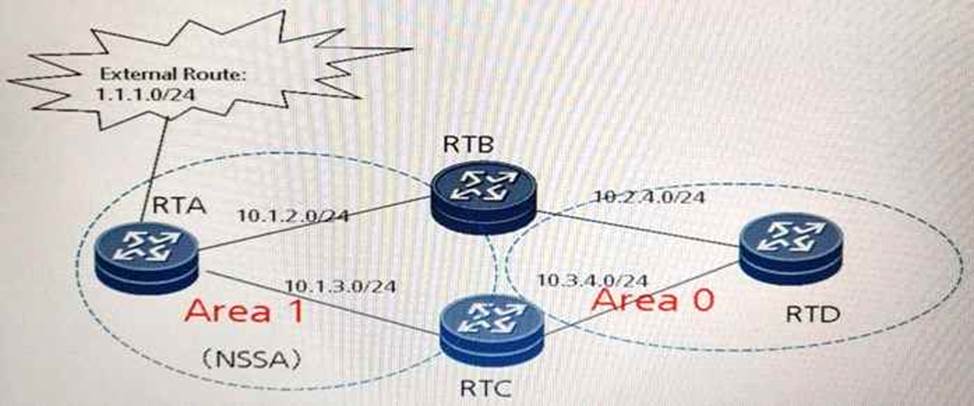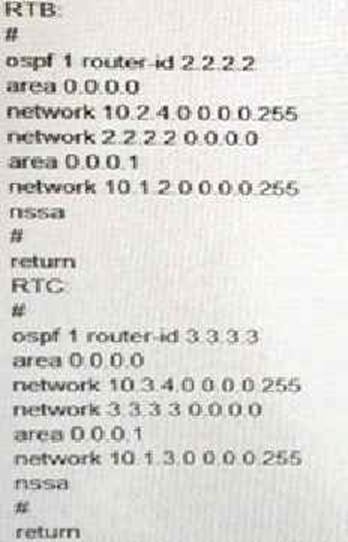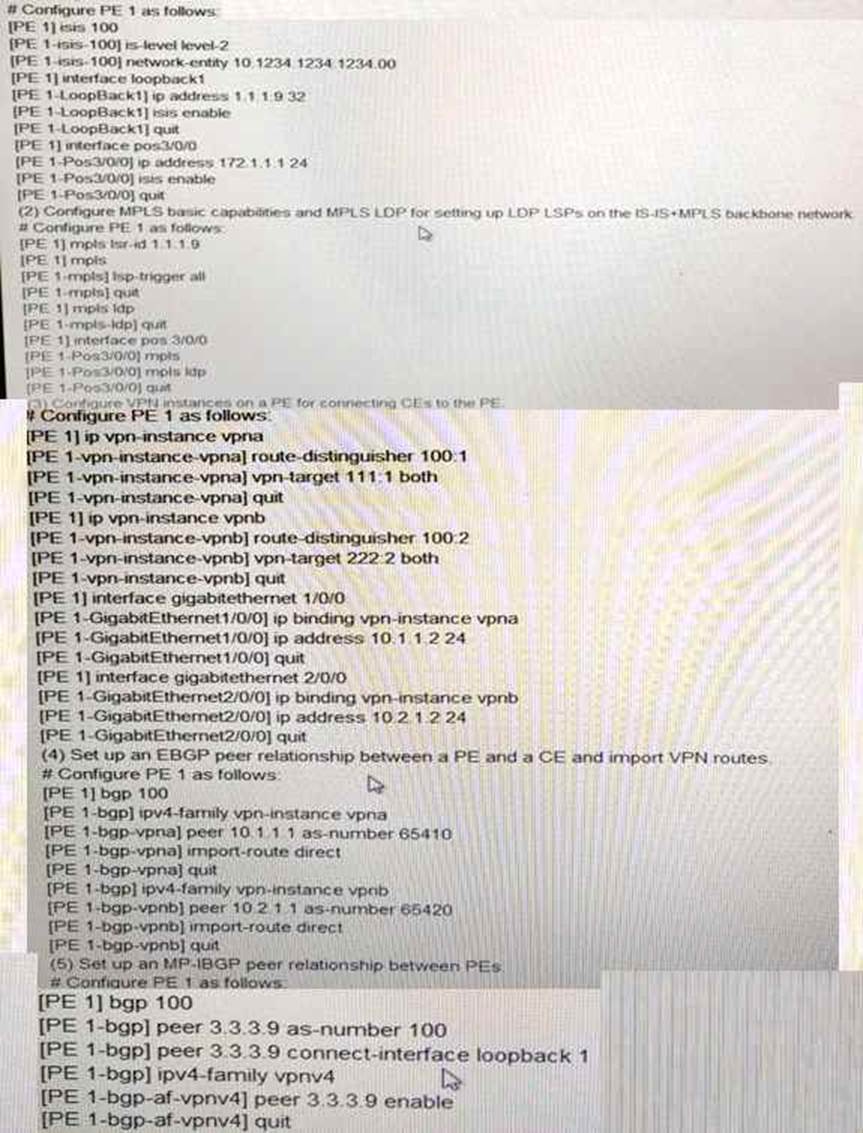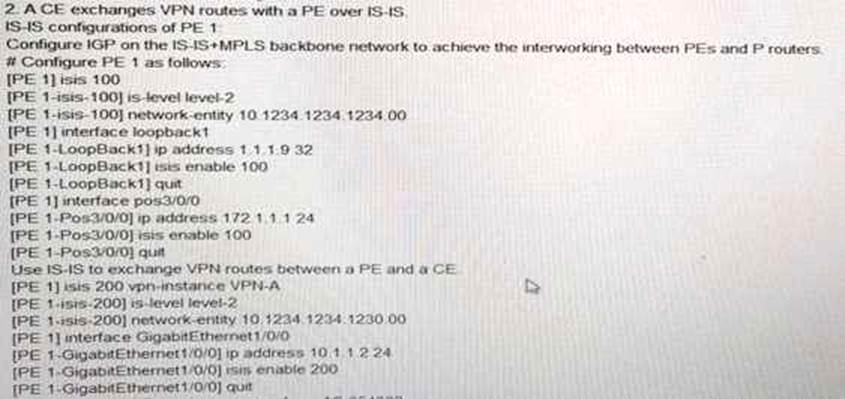Huawei H31-161-ENU HCIE-Carrier IP (Written) Online Training
Huawei H31-161-ENU Online Training
The questions for H31-161-ENU were last updated at Dec 10,2025.
- Exam Code: H31-161-ENU
- Exam Name: HCIE-Carrier IP (Written)
- Certification Provider: Huawei
- Latest update: Dec 10,2025
Which statements about the edge access layer is true?
- A . Using the packet technology it provides a comprehensive transport platform that boasts high reliability, quality of service (QoS) assurance, and large capacity.
- B . It implement call control. With the software technology as the core, it completes basic real-time call control and connection control.
- C . It connections users to the network by providing various access means, and converts the format of information can be transmitted on the network.
- D . It process additional value-added service and operation support for established callas.
Which statement describes the delay variation requirement of the voice service for the IP bearer network?
- A . No strict requirement
- B . Bearer network delay variation + 1s
- C . Bearer network delay variation +100 ms, allowed maximum delay variation +200ms
- D . Bearer network delay variation = 10 ms. Allowed maximum delay variation =20ms
Which statement describes the packet loss ratio requirement of the voice service for the IP bearer network?
- A . Allowed maximum packet loss =10-6
- B . Allowed maximum packet loss =1%
- C . No strict requirement
- D . Allowed maximum packet loss =1%
Which of the following can be implemented in an IP backbone network?
- A . RIP
- B . BGP
- C . ISIS
- D . MPLS
RTA is a provider edge (PE) router. OSPF is deployed between RTA and a customer edge (CE) .
Which of the following can be used to avoid routing loops when RTA generate an autonomy system-external (ASE) link-state advertisement (LSA) and sends it to the CE?
- A . Configuring the same VPN route tag on the PE
- B . Configuring Shame Link among PEs
- C . Setting DN-bit in the ASE LSA
- D . Configuring the same domain ID on the PE
Exhibit:

As shown in the figure, external route 1.1.1.0/24 is imported to RTA that is located in the NSSA area RTD is a backbone area router. RTB and RTC are both area border router (ABRs).
OSPF configuration are as follows.

Which statement is true?
- A . RTD receive two external LSAs whose LS_ID is 1.1.1.0
- B . RTD receive an external LSAs whose LS_ID is 1.1.1.0 and advRouter is 2.2.2.2.
- C . RTD receive an external LSAs whose LS_ID is 1.1.1.0 and advRouter is 3.3.3.3.
- D . RTD receive an external LSAs whose LS_ID is 1.1.10/24 based on category 7 LSAs sent by RTA
1- On the backbone network, if a PE is connect to a CE, VPN instances need to b reconfigured on the PE, and interface on the PE for connecting to the CE must be bound to a VPN instance. After binding an interface to a VPN instance, you must configure the IP address of the interface between PEs, IS-IS configured for PE interworking. PLSA basic capabilities and MPLS LSP are configured for LSP establishment, and MP _IBGP is configured for VPN route exchange VPN routes exchange , LDAP is short for Label Distribution Protocol, and IBGP is short for interior Border gateway protocol.
2-A CE exchange route exchange routers with a PE over External Border gateway Protocol (EBGP. Configure interior gateway protocol (IGP) on the IS-IS+MPLS backbone networking to achieve the interworking between PEs and IP routers.

- A . -4
- B . -3
- C . -2
- D . -5
- E . -1
As shown in the figure. CE 1 and CE 3 belong to VPN-A, and CE 2 CE 2 4 belong to VPN-B VPN-target VPN-A is 111:1 and that of VPN-B is 222:2 users on different VPNs are not allowed to access each other.
Configuration principles are as follows:
On the backbone network VPNs are not connected to a CE, VPN instance need to be configured on the PE, and an interface on the PE for connecting to the CE must be bounded to a VPN instance. After binding an interface to a VPN instance, you must configure the IP address of the interface Between
PEs, IS-IS is configured for PE interworking. MPLS basic capabilities and MPLS LDP are configured for MPLS LSP establishment, and MP-IBGP is configured for VPN route exchange.

How to enable CE 1 to learn routes from AS 64430?
- A . Import IS-IS 200 routes in IS-IS process 100
- B . Import IS-IS 100 routes in IS-IS process 100
- C . Import BGP routes in IS-IS process 100
- D . Import BGP routes in IS-IS process 200
As shown in the figure. CE 1 and CE 3 belong to VPN-A, and CE 2 CE 2 4 belong to VPN-B VPN-target VPN-A is 111:1 and that of VPN-B is 222:2 users on different VPNs are not allowed to access each other.
Configuration principles are as follows:
On the backbone network VPNs are not connected to a CE, VPN instance need to be configured on the PE, and an interface on the PE for connecting to the CE must be bounded to a VPN instance. After binding an interface to a VPN instance, you must configure the IP address of the interface Between
PEs, IS-IS is configured for PE interworking. MPLS basic capabilities and MPLS LDP are configured for MPLS LSP establishment, and MP-IBGP is configured for VPN route exchange.

How to enable CE 1 to learn routes from AS 64430?
- A . Import IS-IS 200 routes in IS-IS process 100
- B . Import IS-IS 100 routes in IS-IS process 100
- C . Import BGP routes in IS-IS process 100
- D . Import BGP routes in IS-IS process 200
As shown in the figure. CE 1 and CE 3 belong to VPN-A, and CE 2 CE 2 4 belong to VPN-B VPN-target VPN-A is 111:1 and that of VPN-B is 222:2 users on different VPNs are not allowed to access each other.
Configuration principles are as follows:
On the backbone network VPNs are not connected to a CE, VPN instance need to be configured on the PE, and an interface on the PE for connecting to the CE must be bounded to a VPN instance. After binding an interface to a VPN instance, you must configure the IP address of the interface Between
PEs, IS-IS is configured for PE interworking. MPLS basic capabilities and MPLS LDP are configured for MPLS LSP establishment, and MP-IBGP is configured for VPN route exchange.

How to enable CE 1 to learn routes from AS 64430?
- A . Import IS-IS 200 routes in IS-IS process 100
- B . Import IS-IS 100 routes in IS-IS process 100
- C . Import BGP routes in IS-IS process 100
- D . Import BGP routes in IS-IS process 200
Latest H31-161-ENU Dumps Valid Version with 181 Q&As
Latest And Valid Q&A | Instant Download | Once Fail, Full Refund

